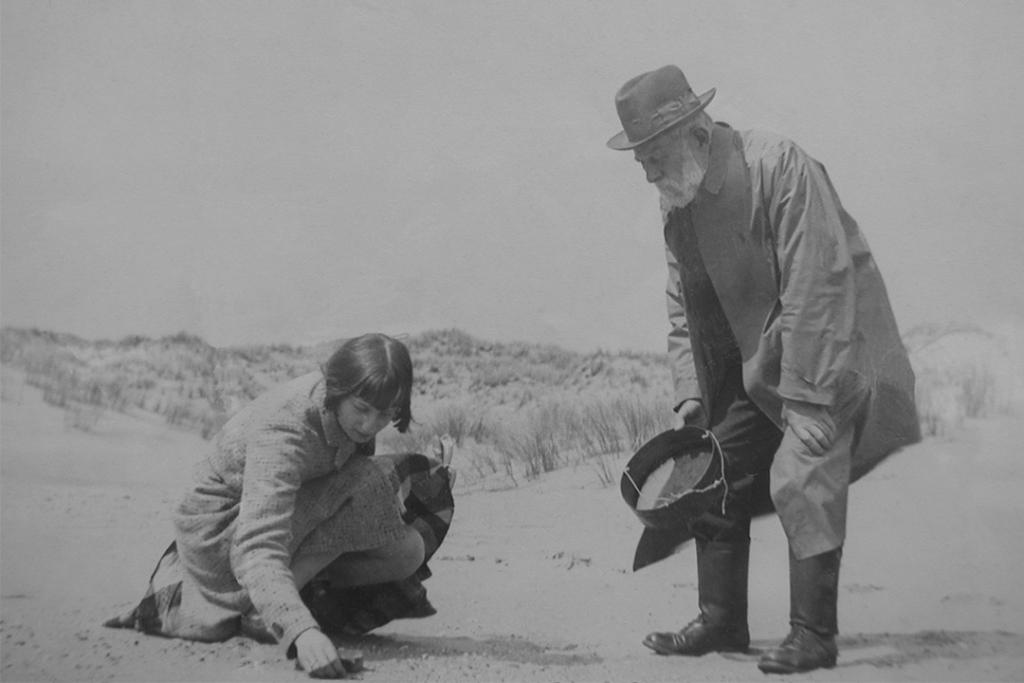Which inspirational woman is the sea snail Chrysallida macmillanae named after?
As we celebrate International Women's Day we look at one of our most highly regarded curators, the conchologist, Nora Fisher McMillan MBE (1908 – 2003) or as friends knew her, Mrs Mac.

Nora was a well-respected curator and author who achieved an impressive list of achievements and accolades throughout her life, not least an honorary MSc from the University of Liverpool in 1991 and an MBE in 1992. She produced over 400 publications and wrote several books, including ‘Observer’s book of Seashells’ (1977) and, one of her most significant publications, ‘British Shells’ (1968). British Shells is still used today and was celebrated for its ability to open up the subject of shell recording to a wide audience and bridge the gap between science and the general public. In 1970 she was elected a member of the Royal Irish Academy (Ireland’s leading body of experts in the sciences and humanities) and was also President of the Conchological Society of Great Britain and Ireland. In 2000, a newly discovered sea snail was named after Nora, Chrysallida macmillanae.
"British Shells was celebrated for its ability to open up the subject of shell recording to a wider audience and bridge the gap between scientists and the general public".
Born Eleanor Fisher, Nora was born in Belfast in 1908 and her interest in shells was sparked by summer visits to Millisle Beach, County Down as a young girl. Encouraged by a family friend, she joined Belfast Naturalists Field Club junior section where she learnt more about marine animals and her growing expertise was nurtured by fellow members. She was educated at Liverpool Girls’ College in Huyton and Merseyside became established as her second home. Over the years she developed a specialism in Conchology, the study of mollusc shells, and more specifically post-glacial freshwater Mollusca.
In 1929 Nora started working at Belfast Municipal Museum and Art Gallery (later Ulster Museum), and in 1933 she joined the curatorial staff of Liverpool Museum (now our World Museum) working in the vertebrate zoology department. Due to the strict hierarchy of the time, it meant that she was initially not allowed to study the shell collection even though by then she was recognised as a rising star in conchology. I was also shocked to discover that Nora was forced to leave the museum in 1937 when she married William McMillan, a local dental surgeon. This was due to the ‘Marriage Bar’ which was a policy that meant that women had to give up work upon becoming married. It didn’t apply to all occupations but was particularly prevalent in local government where it was organisational policy. The rationale behind this was that married women no longer needed an income and would be otherwise occupied looking after their husbands, home and family. Furthermore, women were seen as selfish if they didn’t want to give up their posts as they were thought to be denying opportunities for men and unmarried women. I can imagine that this must have been incredibly frustrating for ambitious women such as Nora.

Between 1938 and 1956 Nora held small part-time positions in the Geology and Dental departments at the University of Liverpool before eventually returning to the museum as curator of the conchology collections thereafter. Nora continued to work at Liverpool Museum as an employee until her retirement and then as a volunteer until she was 92. She was responsible for recognising and sorting the most scientifically important material within the museum’s conchology collection. She curated the Mollusca collections at World Museum for 50 years, particularly the collections of Frederick Price Marrat who described many new species to science. Nora also persuaded several conchologists to pass their collections to the museum, which as a result, now has one of the largest regional collections with good representations of popular groups.
"I was also shocked to discover that Nora was forced to leave the museum in 1937 when she married William McMillan, a local dental surgeon".
She was an adventurous woman and travelled widely in Europe, Africa, Australia and New Zealand. In the early 1970’s she even went alone on a shell collecting expedition to a whaling station in the Arctic Ocean. In addition to conchology, she also had interests in geology as well as being a keen amateur botanist, naturalist and local historian. Known to friends and colleagues as ‘Mrs Mac’, she was described as a larger-than-life character. She kept goats in her garden which she apparently walked through the neighbourhood in Bromborough where she lived for most of her life. Her house backed onto Dibbinsdale Nature Reserve where she recorded wildlife for more than 60 years. In 2003 she sadly passed away after a short illness, aged 95.

In the museum’s conchology collections there are hundreds of specimens that Nora collected, and many more from other conchologists that she sorted and labelled. Nora did an extensive study of the Mollusca of Cheshire marl-pits, focusing on the Bromborough district of the Wirral. The report was published in the Journal of Conchology in 1959 and the associated specimens were donated to the museum in 1995. They are all meticulously curated in various containers of different shapes and sizes, some of which can be seen in the above photo.
